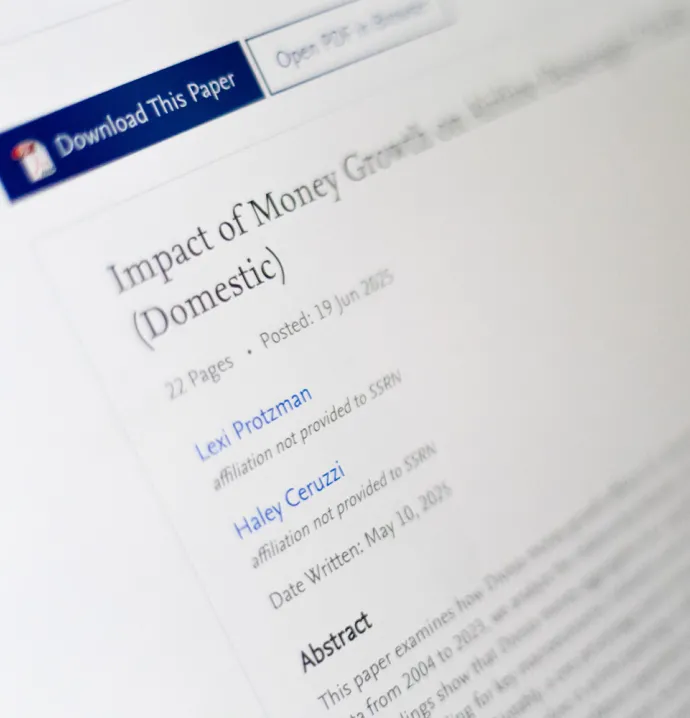Manufacturing Innovation: Industrial organizations use IP to build business
Manufacturing Innovation: Industrial organizations use IP to build business
Intellectual property is big business. In the United States, IP-intensive businesses – like manufacturing, wholesale and retail trade, and professional, technical, management and administrative services – accounted for $7.8 trillion in gross domestic product, 41% of total GDP, in 2019.
Manufacturing may be the most IP-intensive industry of them all. According to a 2019 report from NPD Analytics, IP-intensive manufacturing industries invested 12.4 times more into research and development per employee than non-IP-intensive industries. Some of the top industries were pharmaceutical, communications equipment, chemical, computer and electronic, and medical equipment.
“A lot of these innovations are coming in software and technology, and it affects manufacturing,” said David Petratis (Management, ‘81), chair of the board for MasterBrand. Prior to joining MasterBrand, he served as President and Chief Executive Officer of Allegion plc, a global provider of security products and solutions.
“Software is proprietary, and their software is embedded in some products like electronic chip designs. So, thinking of a company like Microsoft, they heavily defend their software from an IP standpoint. If you don’t defend your IP, it can kill you. And if you drive at it opportunistically, with an eye on the long-term future, it can be an engine of growth for your business.”
Petratis mentioned that many of these IP-intensive companies make a substantial slice of their revenue from creating and protecting intellectual property, something that has become even more important to prioritize in a globalized business world. Companies across the globe see more products, have access to more information and act faster than ever before.
With the introduction of generative artificial intelligence to the public via tools like Chat GPT, anyone can get information about a similar innovation within minutes. That could raise questions about who owns intellectual property and makes speed all the more important.
For example, if a company uses ChatGPT to work through new products or manufacturing processes, does the owner of the
generative AI own the idea? Or does the idea belong to the person inputting the questions and taking the information? Or if someone arrives at a similar innovation at about the same time, who is awarded the intellectual property?
“Those are tough ideas the industry is facing right now, along with the speed of innovation,” said Joyce Pingel (Management Information Systems, ‘87), president of Epiphany Industrial Technologies and Chief Innovation Officer at HOLT CAT. “If there’s an idea that comes along, you better jump on it. Somebody else can get those same concepts and ideas much faster than it takes you to create and get your IP signed off on and through the regulatory process.”
The UNI Metal Casting Center researches and tests new technologies in the metal casting industry and deals with intellectual property regularly. They operate with the goal of linking university-grade research, resources and students to private sector applications. And while they do bring in some revenue through patented innovations, the large majority of their work is provided to companies for free.
Jerry Thiel, director of the UNI Metal Casting Center, said there is a team of five full-time technical staff that focus on research and development. But everyone in the organization, about 25 people, is expected to contribute as well.
“When we work with so many companies in so many different materials in so many different applications, you’re bound to be exposed to a wide variety of technologies and information,” Thiel said. “That drives our ability to innovate, to put things together in ways that nobody has before.”
Because the organization operates within a public university, Thiel sees its role as being a partner for the metal casting industry. That’s also how he views the intellectual property they create. He jokes that all of the intellectual property he and the organization have created over the past three decades has made them “hundred-aires, not millionaires.”
“More importantly, the technologies we’ve developed are helping the industry solve problems, and that far outweighs any benefit you get from monetary fashions,” he said. “By us patenting this technology, we can help small-to-medium-sized manufacturers without them absorbing much in costs.”
For those looking for some take-home tips on how to deal with intellectual property and innovation, Petratis recommends adding IP reviews to your occasional leadership meetings. At Allegion, there was a full-time team dedicated to helping develop and protect IP, keeping the topic at the forefront of important conversations, which is crucial to long-term success.
“Take the time on your leadership agendas to put yourself in a future state, look ahead,” Petratis said. “You should have processes and systems that help protect those investments. When you’re looking at investments for the future, intellectual properties must be protected. And if you’re going to be a good steward of these assets, for any size company, you have to be managing those IPs, or it will erode your success over the long term.”




